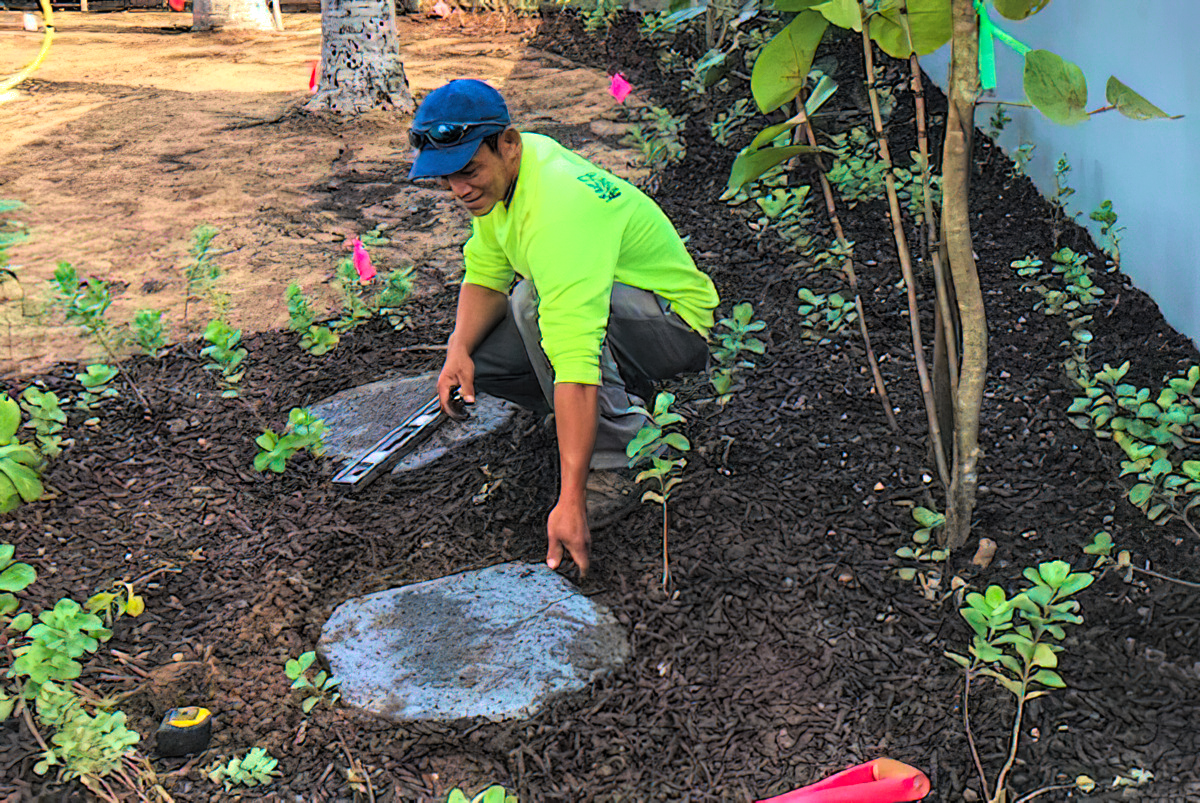Winning Landscape Design
The Hawaiian Islands, with their diverse ecosystems and breathtaking landscapes, offer a unique canvas for creating winning landscape designs. A successful landscape design in this tropical paradise requires careful consideration of the region’s distinctive climate, flora, and cultural elements. In this article, we will explore the essential ingredients that contribute to a winning landscape design in the Hawaiian Islands.
The essential ingredients that contribute to a winning landscape design in the Hawaiian islands
1. Understanding the Hawaiian climate.

The climate in Hawaii is tropical, with stable temperatures and high humidity throughout the year. When planning a landscape in this environment, it is essential to consider the constant warmth and the occasional heavy rain. To ensure sustainability and resilience, the design should include native plants that thrive in such conditions, such as ferns, ti plants, and hibiscus.
2. Integration of native flora.

A winning landscape design in Hawaii embraces the unique biodiversity of the islands. Native plants not only contribute to the aesthetic appeal but also play a vital role in supporting local ecosystems. Consider incorporating indigenous species like the iconic Hawaiian hibiscus, plumeria, or the vibrant Bird of Paradise. This not only adds authenticity to the design but also helps in conservation efforts.
3. Cultural sensitivity

The Hawaiian Islands have a rich cultural heritage deeply intertwined with the land. Successful landscape design respects and reflects this cultural heritage. Consider including elements such as traditional Hawaiian gardens, known as “lo‘i kalo” (taro patches), which hold historical significance.
The use of lava rock, traditional Polynesian symbols, and color schemes inspired by native art can further enhance the cultural authenticity of the design.
4. Water features and conservation

Water is a precious resource in Hawaii, and a winning landscape design should prioritize water conservation. Incorporating sustainable irrigation systems, rainwater harvesting, and drought-resistant plants are essential.
Additionally, strategically placed water features, such as ponds or waterfalls, not only add visual appeal but also evoke the soothing sounds of nature, contributing to the overall ambiance.
5. Functional outdoor spaces

In Hawaii, where outdoor living is a way of life, creating functional outdoor spaces is crucial. Consider designing areas for relaxation, dining, and socializing that take advantage of the stunning surroundings.
Patios, lanais, and outdoor kitchens can seamlessly blend with the landscape, providing residents and guests with an immersive outdoor experience.
6. Balance and harmony

Achieving balance and harmony is a key principle in landscape design, and it holds particular significance in the Hawaiian context. A winning landscape design should create a harmonious coexistence between natural elements and human-made structures.
The use of color, texture, and form should complement the surrounding environment, fostering a sense of unity and tranquility.
In Hawaii, where outdoor living is a way of life, creating functional outdoor spaces is crucial. Consider designing areas for relaxation, dining, and socializing that take advantage of the stunning surroundings.
7. Sustainable practices

Sustainability is not just a trend but a necessity in landscape design, especially in ecologically sensitive areas like the Hawaiian Islands. Consider incorporating eco-friendly materials, low-maintenance plants, and energy-efficient lighting.
Native landscaping and xeriscaping techniques can significantly reduce the ecological footprint of the design while promoting long-term sustainability.
8. Incorporating breathtaking views and vistas

The Hawaiian Islands are renowned for their breathtaking vistas, from volcanic landscapes to coastal panoramas. A winning landscape design should capitalize on these natural wonders by framing views and creating vantage points. Thoughtful placement of elements like pergolas, open-air structures, or strategically positioned plantings can enhance and showcase the scenic beauty of the surroundings.
Sustainability is not just a trend but a necessity in landscape design, especially in ecologically sensitive areas like the Hawaiian Islands. Consider incorporating eco-friendly materials, low-maintenance plants, and energy-efficient lighting.
Native landscaping and xeriscaping techniques can significantly reduce the ecological footprint of the design while promoting long-term sustainability.
9. Adaptable design for micro-climates

Hawaii’s diverse microclimates present unique challenges and opportunities in landscape design. The islands have regions ranging from arid to rainforest environments.
A successful design should be adaptable to these microclimates, utilizing plants and materials that thrive in specific conditions. This adaptability ensures that the landscape remains vibrant and healthy, regardless of variations in local climate.
10. Professional expertise

Engaging the services of a professional landscape architect or designer with local expertise is integral to creating a winning landscape design in Hawaii.
Landscaping professionals familiar with the intricacies of the region can navigate zoning regulations, understand the nuances of soil types, and leverage their knowledge to create a design that seamlessly integrates with the environment.
Creating a winning landscape design in the Hawaiian Islands is an art that combines environmental awareness, cultural sensitivity, and a deep appreciation for the natural beauty that defines the region.
By understanding and embracing the unique ingredients discussed in this article—whether it be the tropical climate, native flora, or cultural elements—landscape designers can craft outdoor spaces that not only captivate the eye but also contribute to the sustainability and cultural richness of Hawaii’s magnificent landscapes.
Through thoughtful planning and execution, a well-designed landscape becomes a harmonious extension of the islands’ inherent beauty, providing a timeless and immersive experience for residents and visitors alike.

